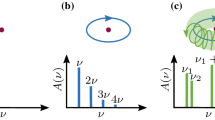Abstract
This paper presents a simple and efficient time-integration method for non-symmetric and non-linear equations of motion occurring in the analysis of rotating machines. The algorithm is based on a semi-analytic formulation combining powerful methods of linear structural dynamics applied to non-linear dynamic problems. To that purpose, the total solution is separated into a linear and a non-linear part, and a further partitioning into quasi-static and dynamic parts is performed. Modal analysis is applied to the undamped equations of the dynamic parts. The quasi-static parts contain all degrees of freedom, while a cost-saving modal reduction may be easily performed for the dynamic parts. Duhamel's integral is utilized for the modal equations. The time-evolution of the unknown modal excitations due to the dissipative, non-conservative, gyroscopic and non-linear effects entering Duhamel's integral is approximated during each time-step. The resulting time-stepping procedure is performed in an implicit manner, and the method is examined in some detail, in view of stability and accuracy characteristics. A rotordynamic system serves as a benchmark problem in order to demonstrate the computational advantages of the present method with respect to various other time-integration algorithms.
Similar content being viewed by others
Author information
Authors and Affiliations
Rights and permissions
About this article
Cite this article
Holl, H. An efficient semi-analytic time integration method with application to non-linear rotordynamic systems. Computational Mechanics 26, 362–375 (2000). https://doi.org/10.1007/s004660000184
Issue Date:
DOI: https://doi.org/10.1007/s004660000184




